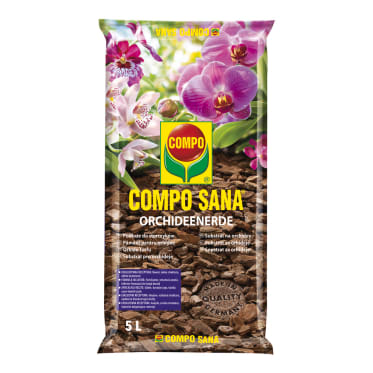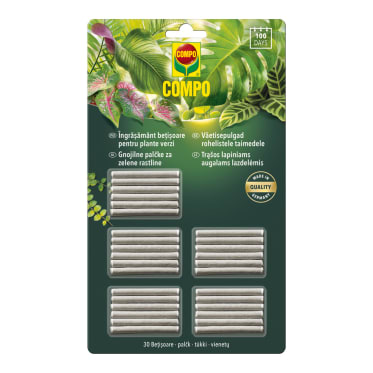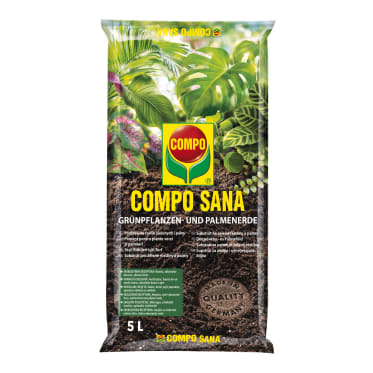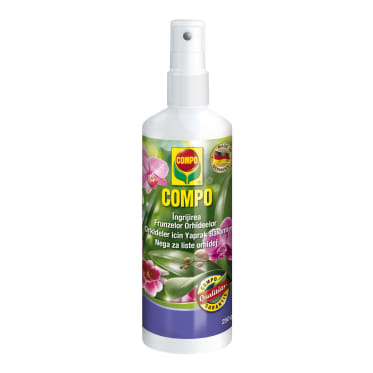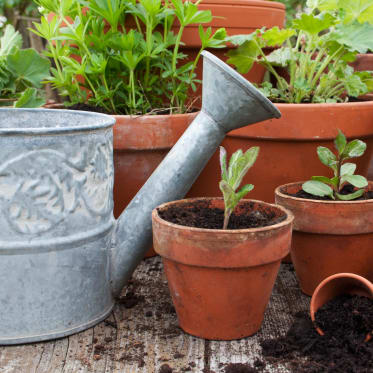Frequent search terms

- COMPO
- Guide
- Plant Care
- Indoor plants
- Caring for houseplants in the winter
How to ensure that your plants survive the cold season in good shape
Caring for houseplants properly in the winter
Winter can be a testing time for houseplant enthusiasts and their protégés. Outside it is cold and damp, so we make our homes that much cosier: Heating on, curtains closed and a nice cup of tea on the sofa. While this might seem like a pleasant image, you should go about two of these things with caution. We tell you what you can do to prevent your houseplants from dying in the winter here.
The best place for houseplants in the winter
If there's one thing your houseplants need in the winter, it's light, light and more light. They get far too little of it because of the short days and often gloomy weather. This is a good reason to clean your windows, draw back your curtains and position your plants so that they get as much daylight as possible. A spot by the window is therefore perfect but since most houseplants will not tolerate draughts and usually react by shedding or turning yellow at the tips of their leaves, care is needed. You should move the plant to an area protected from draughts when you ventilate your home. To make sure the root ball of large plants located on the floor does not get cold, it is a good idea to place the plant on a stool or a rolling plant caddy. This will allow you to move your green protégé to safety while you ventilate without too much effort.

Cut down on watering and fertilisation
Unlike their counterparts in the garden, you won't be able to tell by looking at houseplants that they also enter a dormancy phase in the winter and need much less water and far fewer nutrients due to their slower growth during this period. You should cut right down on fertilisation in the winter. It is also sufficient to water your houseplants every seven to ten days during the cold season. The soil of plants on a windowsill above a radiator may dry out quicker and you might need to water them a little more often. You can use the well-established thumb trick to quickly find out whether your houseplant needs water or has a good supply. Simply stick your thumb a few centimetres into the soil to check the moisture levels.
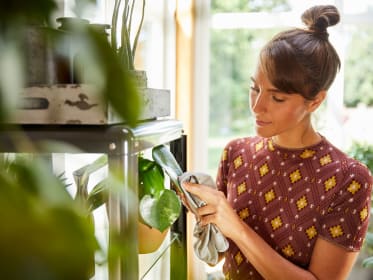
Houseplants and warm air from heating
Heat is not the only reason why houseplants and warm air from heating are not compatible (most houseplants feel comfortable at temperatures of 20-24 °C). It is also because of the dryness associated with it. The cosy, warm climate in your home created by the heating system results in low levels of the air humidity tropical houseplants depend on so much. Plants that cope relatively well with warm air from heating include cacti, succulents and jade plants.
A lack of air humidity can weaken your plants in the long run, causing their leaves to turn yellow and making them more vulnerable to pests. Spider mites, scale insects and mealybugs in particular thrive in dry, warm air and can spread rapidly. Regularly remove dust from your green treasures and use this as an opportunity to inspect them for unwelcome guests and diseases. Leaves with crinkles, white spots, threads between or a sticky film on them are often an indication of your houseplant being unhealthy. You should separate the affected plant from the others and treat it with a plant protection product made with natural ingredients.
Suitable products for plant care in the winter
Find out more about plant care in the winter

